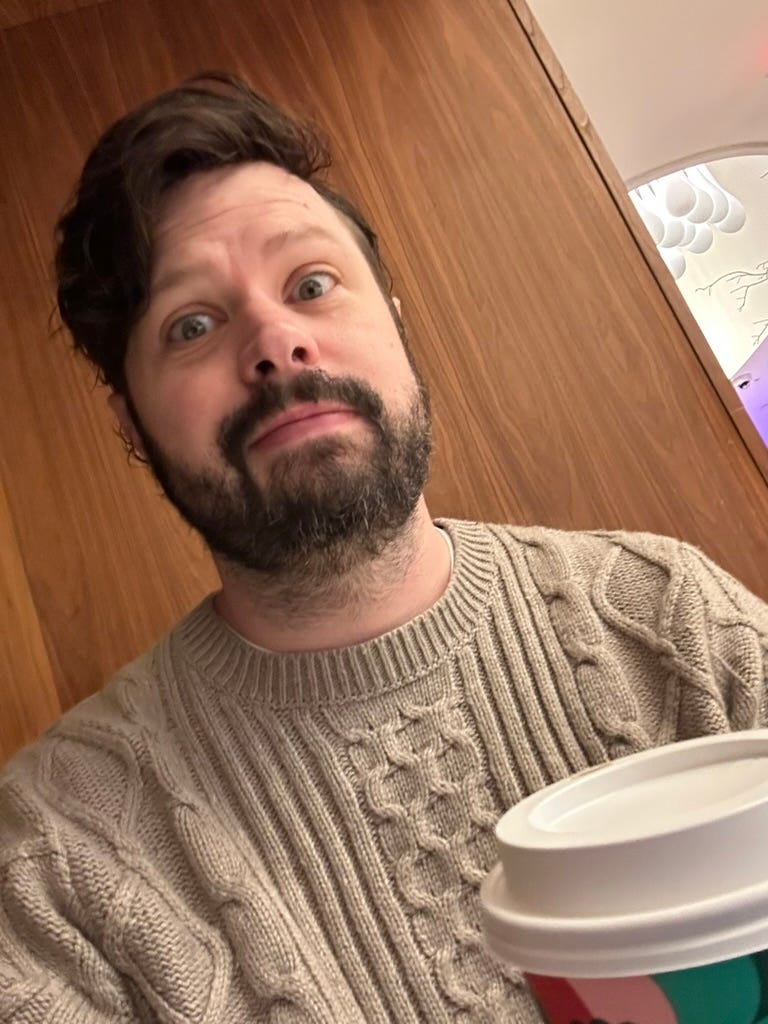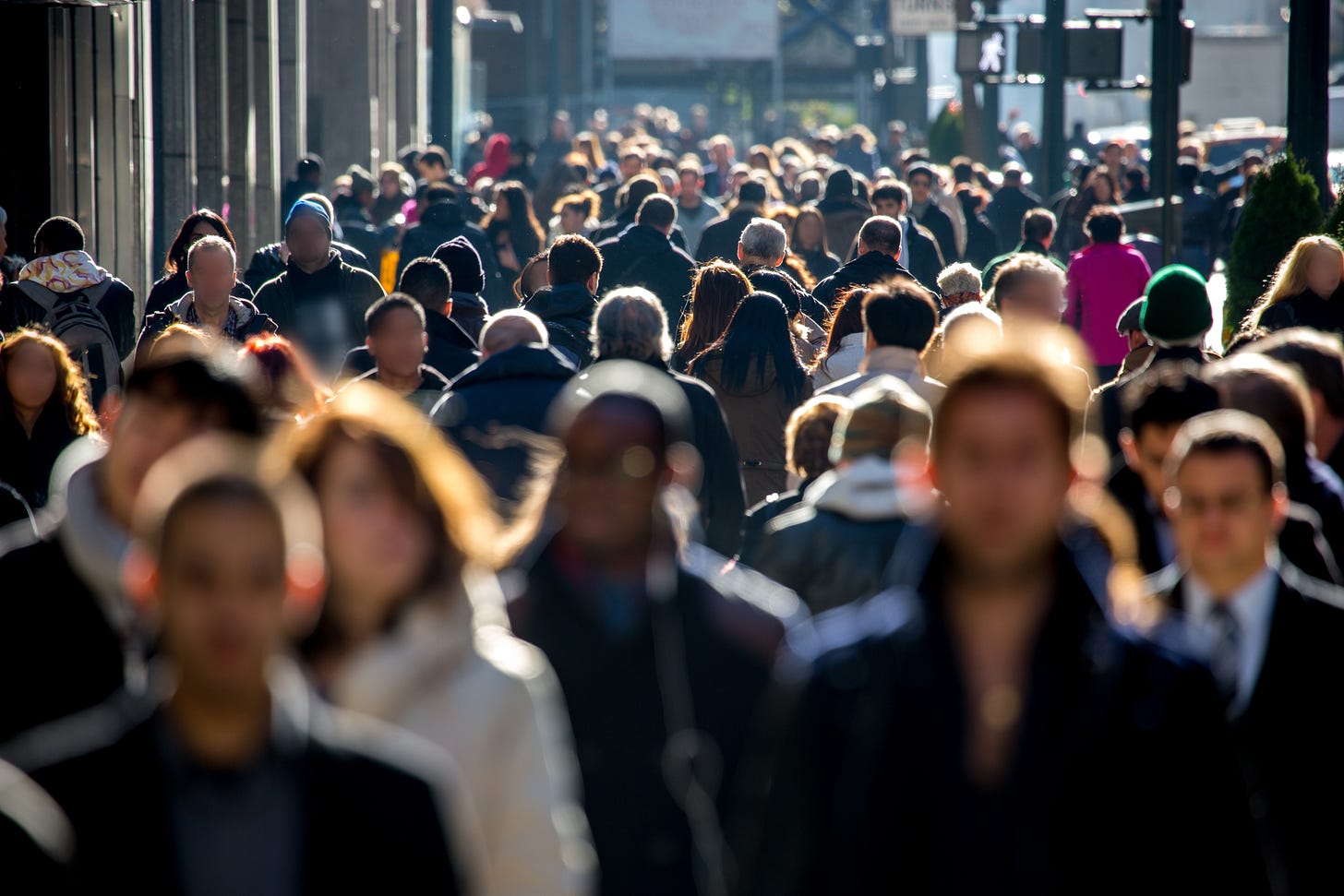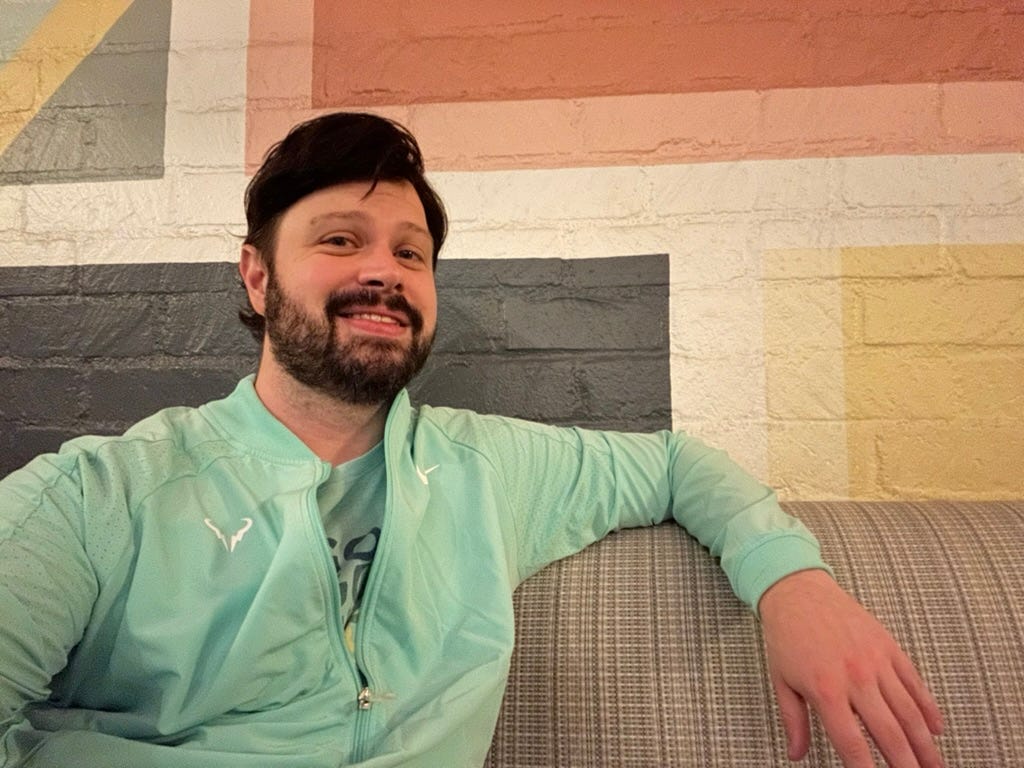Awakening from the Zombie Shuffle
How Slowing Down Can Help Us See, Connect, and Truly Live
Walking down the street felt a bit like wandering through a slow-motion zombie movie.
Everyone moved with a calculated, almost choreographed urgency—like a scene straight out of World War Z, but with office attire and takeaway coffee cups. Nearly no one strayed from their path, as if we were all extras in a well-rehearsed dance of disconnection.
In need of both refuge and a boost, I ducked into a nearby Starbucks. Caffeine, I reassured myself, was a perfectly acceptable coping mechanism. After all, I needed something to keep me from joining the hordes (or at least to camouflage myself).
As I stood there, my latte just picked up, another now-caffeinated “zombie” brushed past me. AirPods firmly in place, they seemed utterly removed from the world around them—focused on some unseen goal as if following their own invisible GPS.
I couldn’t help but be grateful that their purpose wasn’t to eat me.
I smiled at the thought, a mix of amusement and unease. Here we all were, shuffling through our day-to-day, yet barely noticing each other.
It made me wonder: what kind of “zombie” might I become if I didn’t pause now and then to truly look around?
I settled into a tiny table in the corner, feeling almost like an undercover agent behind enemy lines.
These places, it seemed, weren’t exactly designed to nurture a quiet observer like me—no, they were playgrounds for the focused, the single-minded, the caffeinated “zombies” I couldn’t help but fixate on. Still, I let my eyes roam.
I scanned the room for some spark of human connection.
Perhaps a casual remark passed between strangers waiting in line, a warm greeting between barista and customer. Something. Anything. Just a simple moment of acknowledgment that we’re all in this together.
But I saw nothing.
People stood side-by-side yet remained isolated, lost in their own digital worlds or inner monologues. Even that first glorious sip of a new latte—when you’d expect someone to pause, savor the sweet cream and bitterness fused into something sublime—was reduced to a mechanical action.
Grab.
Sip.
Exit.
No lingering, no appreciation, no shared smiles. Just a quick pivot, a duck under a stranger’s shoulder bag, and out they went.
I couldn’t help thinking: no wonder we’re all trapped in this perpetual fight-or-flight feeling.
When even a coffee shop—once a place of communal rest and chatter—turns into a gauntlet of dodges and neutral expressions, it’s hard not to feel like we’re bracing ourselves against the world rather than opening up to it.
It made me wonder what would happen if we dared to slow down, look around, and remember what it feels like to simply be.
This year, I left the buzzing rhythms of Salt Lake City—Utah’s “big city”—and settled into a quieter suburb just outside Ogden. By comparison, Ogden is downright cozy, and it surprised me how quickly I felt my own pace begin to soften.
Of course, my best friend would roll his eyes here, insisting that I still find ways to fill my calendar and wander about. He’s not entirely wrong; the slow life hasn’t fully claimed me. But let’s just say it’s found a solid foothold.
Instead of racing from one errand to the next, I’ve started taking my mornings more gently. I linger over my coffee, let my mind drift, and sometimes even listen to a record before I head out the door—no earbuds, just the hum of the neighborhood waking up. Rather than stacking my weekends with back-to-back plans, I now give myself permission to enjoy a long walk or a quiet afternoon reading on the porch. It’s less about “doing” and more about “being.”
This shift has brought its own subtle gifts.
My stress levels have dipped, and I’m noticing more of the world around me.
I’m more present in conversations and more willing to let a moment breathe without checking my phone.
I’ve even started savoring that second (or third) sip of coffee rather than gulping it down on my way somewhere else.
In a smaller place, life’s smaller pleasures get the spotlight.
It’s curious, isn’t it, how much a simple change in location can alter so much? The world outside may still feel a bit zombie-ish from time to time, but here, I have just enough space—and just enough quiet—to remember I’m alive.
So, how do we tap into the world of slow living?
Perhaps the “secret” is being a witness to the world around us.
Maybe it begins with learning to truly witness the world around us—to simply look and listen without rushing to the next thing.
Just as I paused in that coffee shop, no longer one of the hurried masses but an observer, you can choose to become a gentle detective of your surroundings.
When we allow ourselves to notice the subtle details—a stranger’s smile, the warm rustle of leaves outside the window, the soft hum of distant traffic—we begin to shed that constant sense of urgency.
We remember that life isn’t a race to the finish line; it’s a journey with countless, intricate scenes unfolding if we only have the patience to watch.
By stepping back and becoming compassionate witnesses, we might discover that “slowing down” is less about changing our entire lifestyle and more about changing how we see. It’s an invitation to be curious, to be present, and to let each moment remind us that we are more than just another face in the zombie horde.
About Alex
I’m equal parts old soul and curious wanderer, a farmer boy at heart, and a writer when I can wrangle my ADHD.
Guided by my work as a researcher, yoga therapist, and integrative coach—as well as my own lived experience—I explore identity, connection, and wholeness, inviting others to find meaning and warmth in their own stories.
If you haven’t yet joined me, I invite you to subscribe for free:






You are so right! When I am out, I find myself wanting to talk to people, and sometimes I do. I remember as a young hurried mom, the last thing I wanted was someone in the grocery store to start talking to me. But now I have more time, and I think, why not? I am usually met with a cordial response. When did we stop talking to each other? Like you, I have found it depends on the place.
Alex, about a year ago my dad invited me to go to the VA with him for his annual doctor's check-up. The Minneapolis VA is one of the largest medical campuses in the country. I watched as my dad, one by one snapped a number of "zombies" out of their zombie states by connecting with them directly, one-on-one, asking sincerely how they are doing and waiting for an answer so he could feel them at the heart level. He did that with absolutely every human person who would look him back when he searched to look them in the eye. It was beautiful.